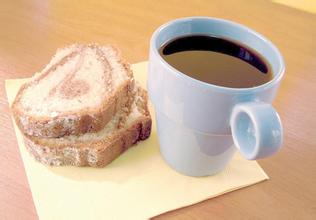Light and pure Fenghuang Manor of Costa Rica Fine Coffee beans Grinding degree roasting degree treatment

The coffee produced in Costa Rica is light and sweet in flavor and pleasant in flavor. The excellent Costa Rican coffee is called SHB. The coffee beans here have been carefully processed, and that is why there is high-quality coffee. Costa Rican coffee is full of Arabica beans, washed with water, its style is bright, fragrant, clear as wind chimes swaying in the breeze, mild acidity and sweetness. Because of the sweetness, even if the coffee gets cold, it tastes very good. This is a major feature of Costa Rican coffee. Costa Rica is bordered by the Caribbean Sea to the east and the Pacific Ocean to the west, as the country's name means in Spanish: fertile shores. Located in the south of SanJos é, the capital of Tarasu, Costa Rica is one of the most valued coffee growers in the country. Tarasu (Tarrazu) is one of the major coffee producers in the world. Coffee farming is an extremely important industry in Costa Rican agriculture. The coffee beans produced at its high latitudes are famous in the world, with mild taste, high acidity, aroma and rich texture, so they are very popular. The raw beans are green and have large particles as a whole, all of which belong to Arabica species.
Costa Rica's coffee industry, originally controlled by the Costa Rican Coffee Industry Company (ICAFE), has been taken over by the official Coffee Committee (Oficinale Cafe). Among the exported coffee, those products that are considered to be of substandard quality are colored with blue vegetable dyes and then transferred back to China for sale. Coffee consumed domestically (dyed blue or undyed) accounts for about 10% of total production, and local per capita coffee consumption is twice that of Italy or the United States.
Brazilian coffee fruit, a coffee producer, accounts for 1/3 of the world's coffee consumption and occupies a place in the global coffee market, although Costa Rica faces several times more natural disasters than other regions. but its acreage is enough to make up for it.
There are many kinds of coffee here, but its industrial policy is large and cheap, so there is not much premium coffee, but it is a good choice for mixing other coffees.
One of the most famous is Mountain Costa Rica Coffee, which tastes mellow and neutral. It can be boiled directly or mixed with other kinds of coffee beans into mixed coffee. It is also a good choice.
Other kinds of Brazilian coffee, such as Rio and Parana, can be produced in large quantities because they do not require too much care. Although the taste is rough, it is a kind of high-quality and inexpensive coffee, which has its own standards because it is distributed all over the country and varies in quality (NO.2~NO.8 according to the number of sundries, NO.13~NO.19 according to the size of beans, and six grades according to taste). Almost all Arabica varieties are of good quality and stable in price. The most famous one is Costa Rica, which has been a necessity of blended coffee and is familiar to the public since ancient times.
Excellent Costa Rican coffee is called "extra hard beans". This kind of coffee can grow above 1500 meters above sea level. Altitude has always been a problem for coffee growers. The higher the altitude, the better the coffee beans, not only because the higher altitude can increase the acidity of the coffee beans and thus increase the flavor, but also because the night temperature at the higher altitude is lower, which can make the trees grow slowly, thus the flavor of the coffee beans is stronger. In addition, due to the high altitude drop caused by sufficient rainfall, it is very beneficial to the growth of coffee trees. However, its negative effect is to increase additional transportation costs, which is likely to make coffee production unprofitable. The coffee industry in Costa Rica has adopted new technologies to increase efficiency, including using "electric eyes" to select beans and identify coffee beans of irregular size.
Product name: Tarazhu Costa Rica Tarrazu SHB, Costa Rica
Country: Costa Rica
Producing area: Tarazhu Tarrazu
Manor: jaguar Manor El Puma Estate
Grade: SHB/EP
Treatment: washing and fermentation, drying in the back section.
Baking degree: medium baking
Finally, let's talk about personal taste. Using utensils: Philharmonic pressure, 20 seconds pressure filtration, 88 degrees water temperature, medium to medium fineness grinding, water powder ratio 12:1, this Philharmonic pressure product surprised me, no less than the successful siphon pot. The dry fragrance and wet fragrance are quite strong, and the dry fragrance of the powder is comparable to that of Yega Snow, to a sweet fragrance that makes people secrete saliva. It smells like chocolate. Rich aroma, mild taste, clean, can not taste astringent taste. The first mouthful was actively sour, but after a while the second bite felt very balanced and thick. After that, you will feel that the bright sour taste is blocked by glycol. After that, Huigan was also quickly and obviously, but it lasted not long. This cup is not bitter and astringent, acidity is good, clean and mild Costa Rica
Important Notice :
前街咖啡 FrontStreet Coffee has moved to new addredd:
FrontStreet Coffee Address: 315,Donghua East Road,GuangZhou
Tel:020 38364473
- Prev

Fresh and rich Costa Rican Phoenix Manor Fine Coffee Bean Cultivation Location Climate
One of the most notable is Costa Rican Tarrazu, produced in the Tarrazu region near the capital San José. The production area benefits from the warm and humid air flow of the Pacific Ocean, has obvious dry and wet seasons, and the weakly acidic volcanic soil is rich in organic matter, which creates good conditions for the root development of coffee plants. The production area is 900-1600 meters above sea level, 80% of which are located at 1000-1400 meters. This coffee has its
- Next

Flavors Balanced Salvador Renas Estate Fine Coffee Bean Flavors Taste Aroma Characteristics Description
Salvadoran Coffee Flavor: Balanced Taste, Excellent Texture Suggestion Roasting Method: Medium to Deep, Versatile Use Superior Bean: Salvadoran SHB Flavor Characteristics: Acid, Bitter, Sweet Mild and Moderate. El Salvador is tied with Mexico and Guatemala as the producer of Asa and Meldo, and is competing with other countries for the top one or two places in Central America. highland
Related
- Does Rose Summer choose Blue, Green or Red? Detailed explanation of Rose Summer Coffee plots and Classification in Panamanian Jade Manor
- What is the difference between the origin, producing area, processing plant, cooperative and manor of coffee beans?
- How fine does the espresso powder fit? how to grind the espresso?
- Sca coffee roasting degree color card coffee roasting degree 8 roasting color values what do you mean?
- The practice of lattes: how to make lattes at home
- Introduction to Indonesian Fine Coffee beans-- Java Coffee producing area of Indonesian Arabica Coffee
- How much will the flavor of light and medium roasted rose summer be expressed? What baking level is rose summer suitable for?
- Introduction to the characteristics of washing, sun-drying or wet-planing coffee commonly used in Mantenin, Indonesia
- Price characteristics of Arabica Coffee Bean Starbucks introduction to Manning Coffee Bean Taste producing area Variety Manor
- What is the authentic Yega flavor? What are the flavor characteristics of the really excellent Yejasuffi coffee beans?

